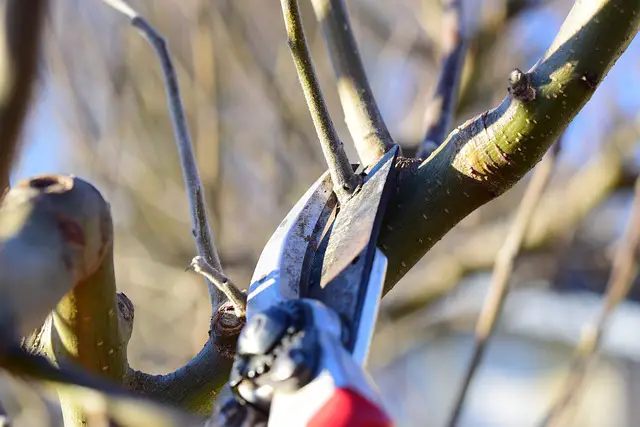
It sounds like a lot of work, right? Pruning your peach trees every single year…another gardening chore to add to the list. Yearly pruning seems like something that should only be necessary if you are a commercial peach grower, trying to maximize the harvest of every tree on every acre of land.
But there are some real, practical reasons for you to prune your backyard peach trees, too. Regular pruning (or lack thereof) will affect the health of peach and nectarine trees more than just about any other fruit tree, for good or for bad. So why do you need to prune your peach trees? Read on to find out.
1. Better overall tree health
A trim, moderately pruned peach tree is a happy peach tree. Without the burden of extra branches, dead or diseased wood, excessive height, or those pesky root suckers, any peach tree will be healthier. And a healthy peach tree means a better crop of peaches – and isn’t that why you planted the tree in the first place?
2. Longer tree life
Peach trees are not as long-lived and long-bearing as some other fruit trees, such as figs or apples. A peach tree may only live about 12 years, and its peak fruiting time will be from years 4 to 8. Read more about the lifespan of a peach tree here.
However, a stressed-out peach tree will have a much shorter lifespan, especially in hot and humid climates where there is more disease and pest pressure. By maximizing its health, energy, and fruiting potential with regular pruning, your peach tree will live its best (and longest) life.
(Read Growing Peach Trees in Hot Climates: What Do I Need to Know? for more info on choosing and caring for peach trees in the heat.)
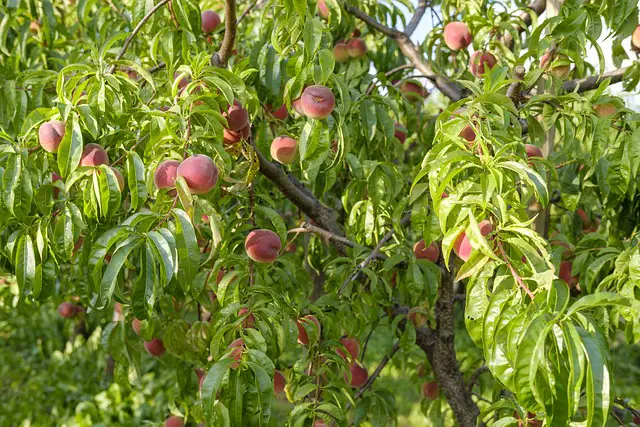
3. Increased productivity
It may seem counterintuitive, but pruning back a portion of a peach tree every year will actually help it produce more fruit in the long run. Fewer fruiting branches might mean slightly smaller crops in the first couple of years, but over time the tree will have a higher ratio of fruiting branches to other wood, which means a better peach harvest.
If you don’t prune a little every year, the volume of branches that will bear fruit decreases. Annual, moderate pruning works best for healthy growth and large peach crops.
4. Stronger root system
When you first get a peach tree from the nursery or shipped from a tree farm, the root ball has to be small enough to fit in a pot (unless you purchase a bare-root tree, which will arrive just like it sounds – with bare roots). The potted or bare-root tree won’t have all of the fine feeder roots it needs for absorbing water and nutrients to support the top growth.
Pruning the newly planted tree right away (selecting just a few main “scaffold” branches) can balance the root system and leafy canopy, giving the roots a chance to fully establish and support future growth. Luckily many quality fruit tree suppliers send the tree already pre-pruned, but you may still need to prune a bit the first year to give the tree its best chance to thrive.
5. Less disease and pest pressure
Peach trees are prone to a myriad of diseases and pests: brown rot, peach tree leaf curl, canker, peach scab, peach tree borer, and bacterial spot to name just a few. But don’t let that deter you! A simple pruning regimen will leave more room between branches, increasing airflow. Better airflow means the tree will be less susceptible to disease.
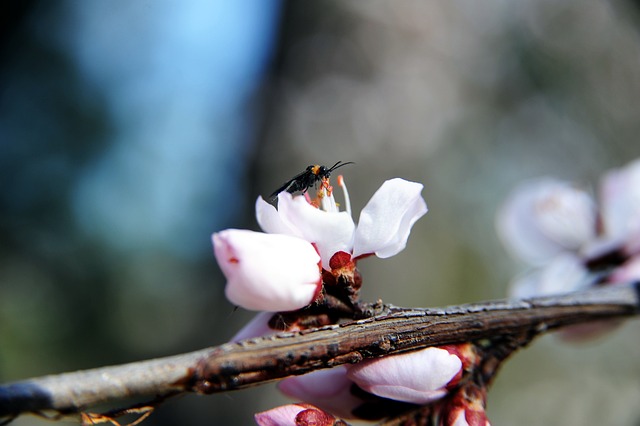
A well-pruned peach tree is a more efficient grower and will generally experience less stress. Environmental hazards – such as pests, bacterial and fungal diseases, extreme temperatures, and drought – won’t phase the tree. It will better handle these issues and can bounce back quickly from stress.
For information on how to easily prevent and treat peach tree pests and disease, check out these two articles – Dormant Peach Tree Spraying: What, When, and How to Do It and Leaf Curl on Peach Trees: What It Is and How to Fix It.
6. Better fruit quality
A peach tree that is pruned to maximize airflow and sunlight exposure will allow the fruit to ripen better. Removing diseased branches, suckers, water shoots, and excessive non-fruiting growth means the tree will have more energy to devote to fruit production and quality.
The peaches’ skin will deepen in color, and the fruit will develop more sugar, juice, and ideal texture. If a peach tree is left unpruned, some of the fruiting branches will remain shaded, keeping the fruit from developing and ripening properly.
7. Larger fruit size
The more fruit that grows on a peach tree, the smaller the peaches will be. A tree that is large with too many fruiting branches will set a lot of fruit, but the tree won’t have the resources and energy to grow each peach to its full size.
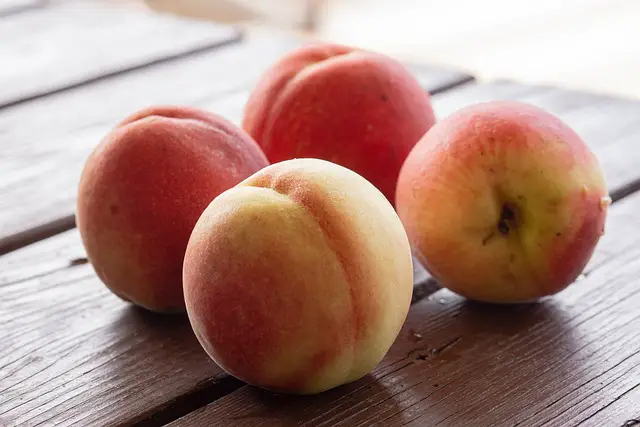
When pruning, aim to reduce the overall size of the tree by about 30 to 40%. In addition to getting rid of dead, diseased branches and suckers, this also includes getting rid of some fruiting branches. Moderate reduction of the fruiting wood means the remaining peaches will be larger, juicier, and more delicious.
8. Easier harvesting
Each year that a peach tree grows unchecked, the fruiting branches will grow higher and higher on the tree. Without pruning, it won’t be long before the peaches are out of easy reach. Yearly moderate pruning keeps the size of the peach tree in check and allows the fruit to grow at a reasonable height.
Even commercial peach orchards prune to control tree size because it’s more efficient to harvest by hand without using ladders. In your backyard orchard, even if it’s just one tree, why not make it easier to get to the good stuff?
9. More exposure to light
The most popular (and effective) way to shape peach trees is using the “open center training system.” The idea is to select a few main “scaffolds” or structural branches and encourage them to grow outward in a vase-like shape, keeping the center of the tree open.
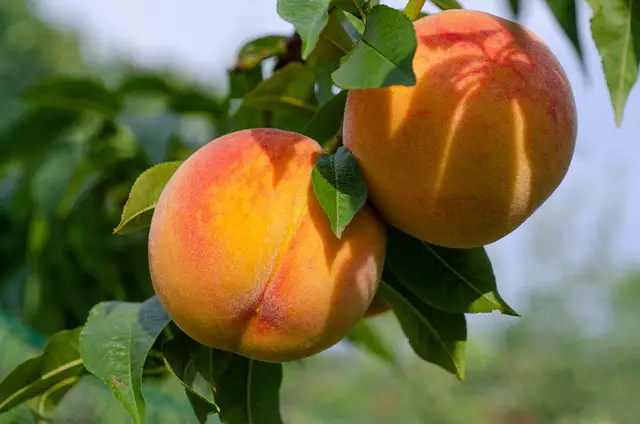
This open center means light can penetrate all throughout the plant and reach every branch and every peach. Air also flows more easily, making the tree less susceptible to diseases and pest problems. But the best part is, more sunlight means bigger, better, and sweeter peaches.
For easy instructions on how to prune your peach trees at home, read A Simple Guide to Pruning Peach Trees for Maximum Harvest.
10. Less fruit thinning necessary
Most peach trees will produce more fruiting buds than they can actually support. Thinning is the practice of removing young peaches so that the remaining fruits are about 6 to 8 inches apart. This allows each peach to grow to optimal size and quality. (Read Should I Thin the Fruit on My Peach Tree? for more details about how to do this.)
If you leave the tree alone, it will likely drop a lot of the extra peaches on its own. However, this could lead the tree to bear a light crop the following year, or only produce a crop every two years.
By pruning the peach tree correctly – that is, cutting it back by about a third every year – the peaches will naturally grow more spaced out. This means less thinning labor for you, and an overall happier, healthier peach tree. Careful not to over-thin, though, as this can lead to split pits. Read this article to find out more about peach pit splitting and how to prevent it.

